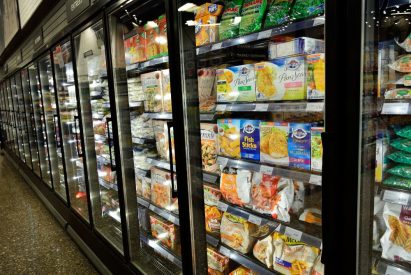“I work for beverage producer and we sell our drinks to supermarkets, too.
We often give the drink stands and refrigerators to supermarkets and they will display our drinks inside. The stands and refrigerators are painted in our colors and carry our logo.
We do it for advertising purposes and I know that we should not capitalize advertising expenses, but book them in profit or loss.
But the refrigerators and drink stands carry our logo, they will be used for more than 1 year, so can we capitalize them?”
Answer: It depends.
The similar situation happens a lot.
You can have various assets placed in the customer premises for advertising purposes: refrigerators and drink stands, various displays, lights, signs,.
Recently I’ve seen very nice example of IKEA, the famous Swedish producer and distributor of cheap and fashionable furniture.
IKEA placed some sofas and coffee tables inside one of our shopping malls and people can freely sit there and relax.
This furniture also carries the logo of IKEA and the information about where the customers can buy it and what the price is.
This is all done for marketing and promotion purposes.
In general, you should NOT capitalize any advertising expense.
This is directly prohibited in IAS 38, not because there are no future economic benefits, but simply because advertising expense does not meet the definition of the intangible asset.
Therefore in general, you should recognize any advertising expense in profit or loss.
The only exception is a prepaid campaign.
If you prepay the advertising campaign for 1 year, then you can recognize the prepayment for the future services because you should recognize an expense when you consume the relevant service.
However, we are here talking about the advertising assets and they are not intangibles.
Should you capitalize assets placed on customer’s premises?
Well, it depends.
Let’s take a look to the conceptual framework for financial reporting.
It was updated in March 2018, but the old definition of an asset still applies, so let me quote:
“An asset is a resource controlled by the entity as a result of past events and from which future economic benefits are expected to flow to the entity. “ (Conceptual Framework, 4.4(a) ).
You have to assess whether the assets placed in the customer premises for free still meet the definition of an asset.
So, you should answer 3 questions:
1. Are future economic benefits expected to flow to you from the use of the asset?
The answer is yes, because otherwise why would you give away your refrigerators for free?
Perhaps you expect the increase of sales of your products as a result of placing them into the nice branded fridge in the supermarket.
By the way, let me add one comment to the future economic benefits.
Many people believe that the future economic benefits must be measurable, otherwise they are not the economic benefits.
One of my readers once wrote me: well, I’m still not sure about capitalizing this asset, because I can’t measure the future economic benefits.
No, you don’t have to measure them.
The future economic benefits are the potential for the asset to contribute to your cash flows or profits. It says nothing about measuring.
The next question you need to ask is
2. Did the asset arise as a result of past event?
In other words, was it purchased, exchanged or acquired in the other way?
In this case it’s clear yes.
The last but probably the most important question in this case is:
3. Is the asset controlled by the entity?
Do you still control refrigerators while they are placed in customer’s premises?
Can you still decide on the asset’s use? Can you direct the asset’s use? Who bears the cost of potential repairs? Do you have the continuous access to the asset?
If you assess that yes, you still have control of asset, then capitalize it and depreciate over the expected useful life.
If you lose control of the asset at the moment you deliver it for free to your customer, then well, you should recognize an expense in profit or loss.
Short illustration
Imagine you signed an agreement with supermarket chain that you will supply branded fridges for free.
The supermarket agrees to leave the fridges on the specified places filled with your products during the period of 2 years.
After this period, the supermarket can decide about the fridges’ destiny.
The economic life of fridges is 4 years.
It implies that you have control of these assets during the first 2 years – this is contractually agreed, so yes, you have an asset here and you would depreciate it over the expected useful life – 2 years in this case.
Of course, you should assess each arrangement very carefully with regard to all aspects because it’s never black or white.
Any questions or comments? Please add them below – thank you!
